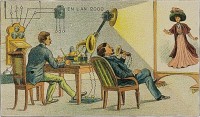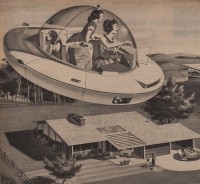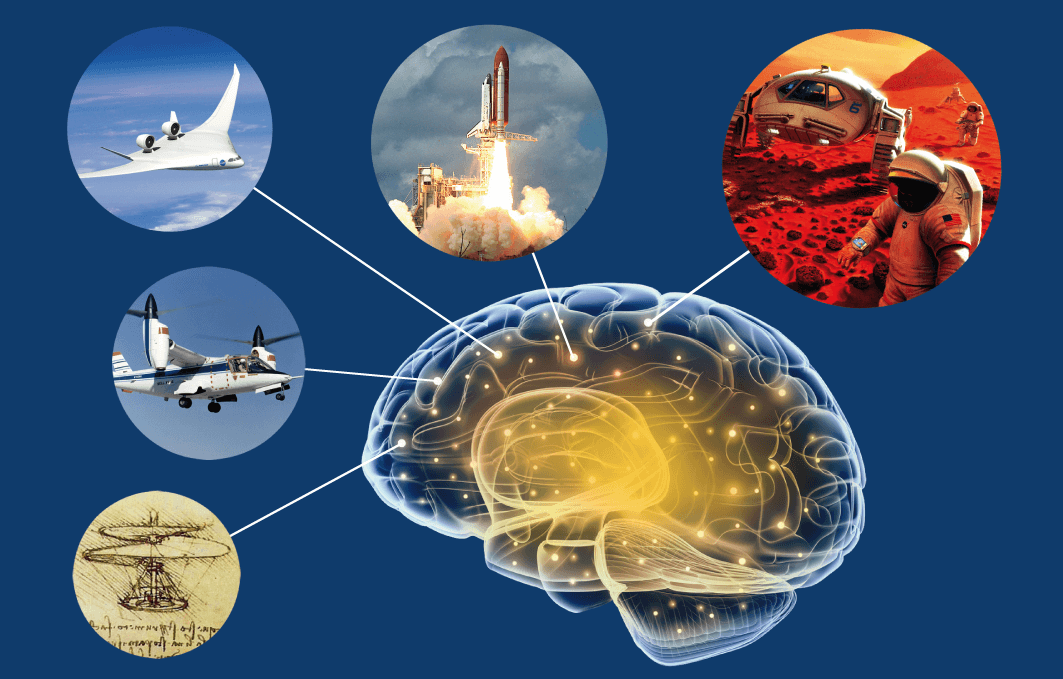Online Marketing, Social Media, High Tech and Start Ups have one thing in common: hard working smart people! Correct predictions of future trends, breakthroughs and whether a technology will succeed or fail are of immense economic importance and essential for the correct functioning of those industries. But nonetheless, all that brain power many predictions from analysts and experts are far far away from what later become known as “the reality”! What might be the reasons for this phenomenon?
When you read enough of historic predictions of how the future “certainly” will look like, you will find common patterns in those predictions which later become apparently wrong. In this article, I will share my insights from 20 years of reading and collect more than a hundred books and watch endless TV Shows about what I call “The History of Future”.
In this article, I will explain common mistakes people doing when trying to look into the future of technologies. By avoiding those mistakes, you will make better predictions of future trends which will help you to make better decisions in your life and your career.
Mistake 1: Predict Wishes not Trends
The simplest but obvious mistake, when predicting the future, is to confuse your own wishes with a rational and profound analysis what the most probable future might be.
There are inventions with devastating effects on millions of humans. Some were invented by men who thought they could civilize wars with more powerful weapons. One of that weapons was the machine gun – invented by Richard J. Gatling. He wrote:
[…] if I could invent a machine – a gun – which could by its rapidity of fire, enable one man to do as much battle duty as a hundred, that it would, to a large extent supersede the necessity of large armies, and consequently, exposure to battle and disease [would] be greatly diminished. – Paul Wahl and Don Toppel, The Gatling Gun, Arco Publishing, 1971
His predictions of smaller armies and less war were completely clouded by his wishes and not backed by any fact.
Lesson: When it’s time to predict the effects of a technology, there should be only one question “What will be likely?” and not “What would be the best outcome?”.
Mistake 2: Ignore the Drawbacks
Another very common mistake is to predict the success of technologies without taking their (social) drawbacks into account. While some technologies would be cool or at least useful or practical IF they succeed, people are unwilling to tolerate their drawbacks. Some disadvantages would be simply annoying but some drawbacks would be devastating for society.

Take for example Videotelephony: It was predicted as “Killer App of the 20’th Century” by countless futurists, starting in 1900. AT&T’s videophone, for example, was introduced to the public as early as 1964 at the New York World’s Fair. Later many other telecommunication companies also failed to launch the Video-Phone as a commercial product for the masses. But what is the reason for this failure? – Its drawbacks for everyday life are simply bigger than its advantages! Would it be nice to see my grandma on the telephone when I call her? Sure! But if the telephone is ringing I don’t want to check the mirror whether I could answer the call and I certainly don’t want to justify the blocked video stream on every call of my boss, mom, girlfriend and so on. As a result, I predict the following: until our society is not changing fundamentally this technology will be in a niche forever as a “Skype Appointment” or a “Videoconference”.

In every TV Show or newspaper article about “The Future” one thing is almost certainly there: “The Flying-Car“. But despite this, it’s a great example of a technology everyone wants in theory but truth is: nobody wants to be near it when it fails! So, while everybody wants to fly over a traffic jam, nobody wants a transportation system where the simplest mistake will not result in a scratch on the paint but in the death of people. For example, nobody wants overtired neighboring mom flying around his bedroom window every morning. I predict the following on flying cars: this technology will be used when our society is used to self-driving cars and automatic drone delivered Pizza. Therefore this technology has only a chance when the automatic piloting systems are far superior to everything we see in self-driving cars today but in 3D. The adoption of this is not a question of technology but of its social acceptance.

The extreme “cousin” of the flying car is the nuclear-powered airplane. It was dreamed of in the 50’s because it could fly for years until it needs to be refueled. BUT people which predict such a technology must be extreme hopeful to ignore its massive drawbacks: a nuclear airplane would depopulate whole territories in case of an air crash and could be used as weapons of mass destruction – only a few people are willing to take such extreme risks for a little convenience. By the way, the same holds true for nuclear-powered Cars and Trains. My prediction on nuclear transportation: until we see working few ton fusion reactors this technology has no chance of realization.
A last and very current example is “Google Glass”. While it’s hip, cool and might be even useful in some cases, only very few people feeling comfortable interacting with someone wearing a camera constantly streaming the whole conversation into the Internet. People ignoring mass surveillance because it is for them not impalpable. Permanently talking into a camera eye is instead very tangible and thereby unpleasant. My prediction for Google Glass: there will be no broadened acceptance of such devices until our society radically changes its social norms or get convenient with direct and personal video surveillance.
Lesson: When a technology for everyday life will be inconvenient for the ordinary man or scares the public, it will probably not used by a broader audience.
In later revisions, I will talk about more mistakes, including:
- Overestimate the Advances in Your Own Field of Expertise
-
Predict a better Version of the Present
-
Miss the Advantages
-
Underestimate the exponential Nature of some technological Trends
- …
The Visual of this Post is made by Dieter Hoffmann
and uses images from various sources


